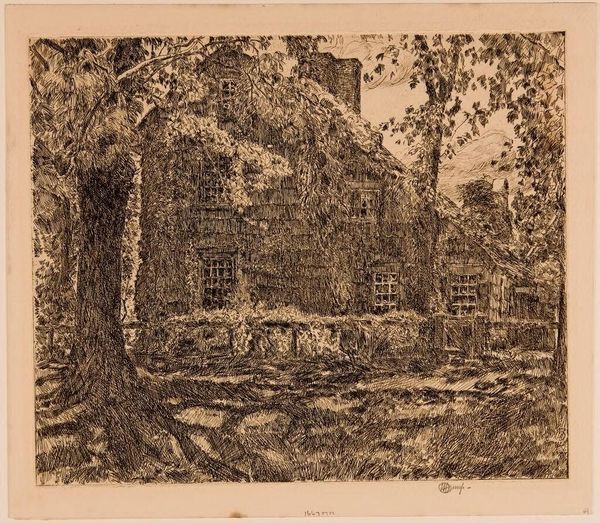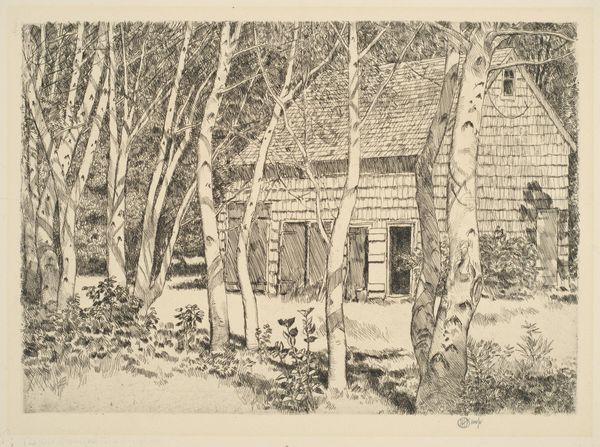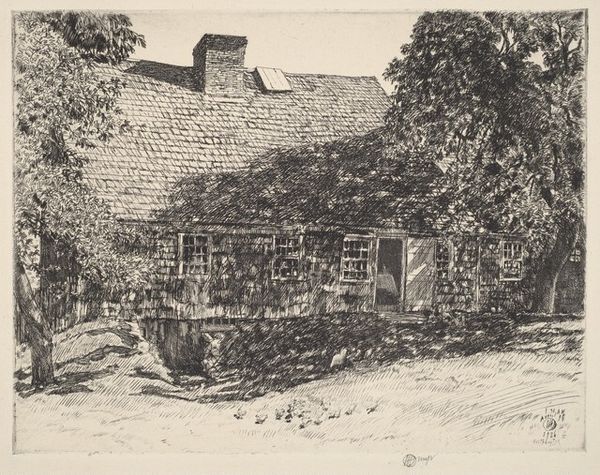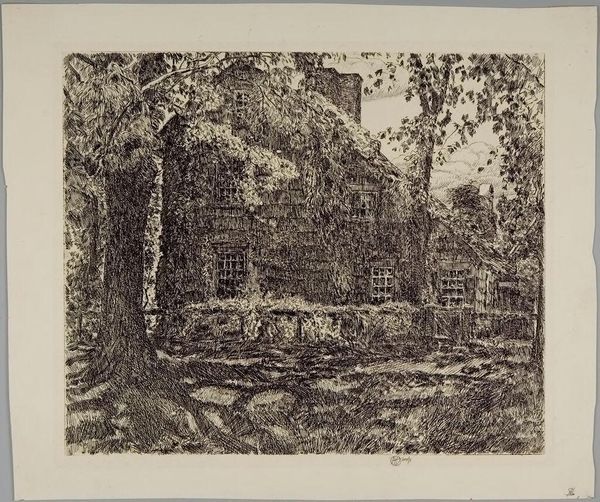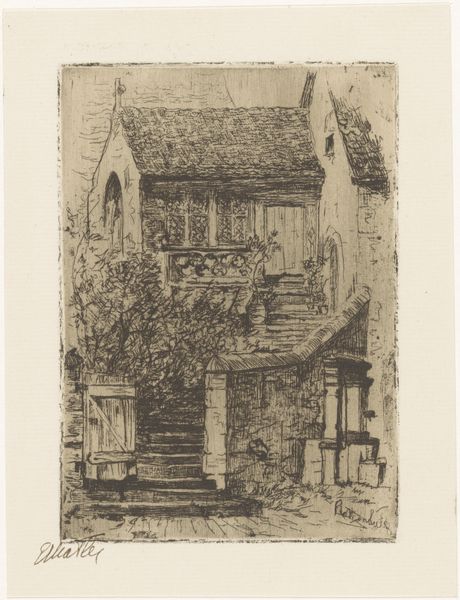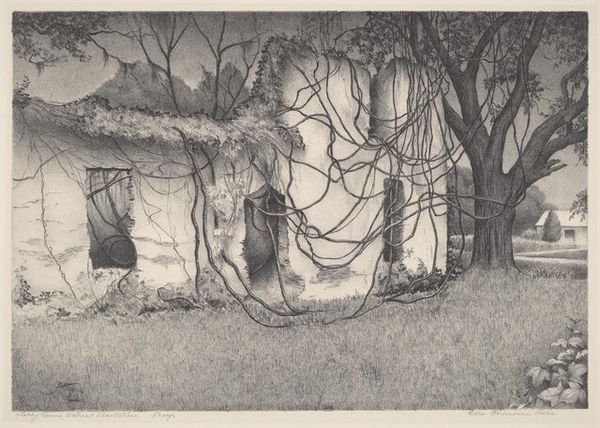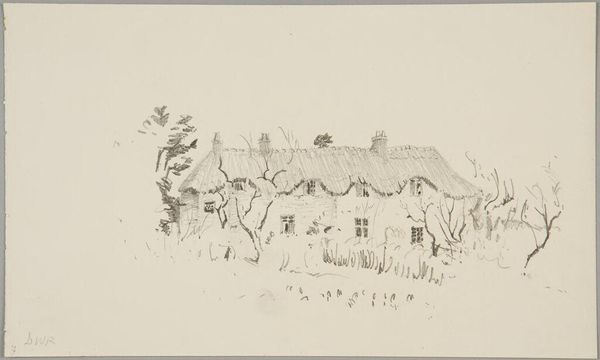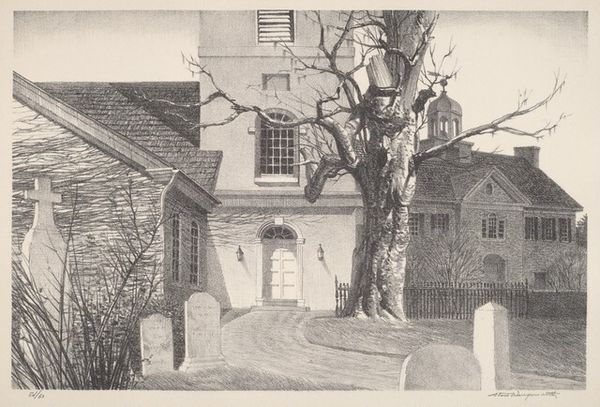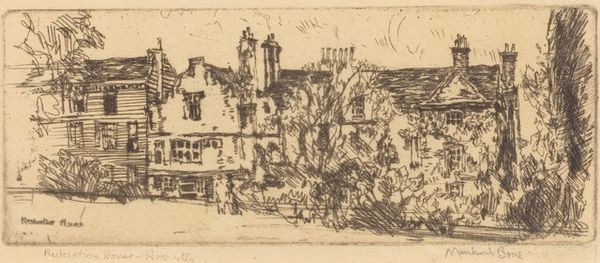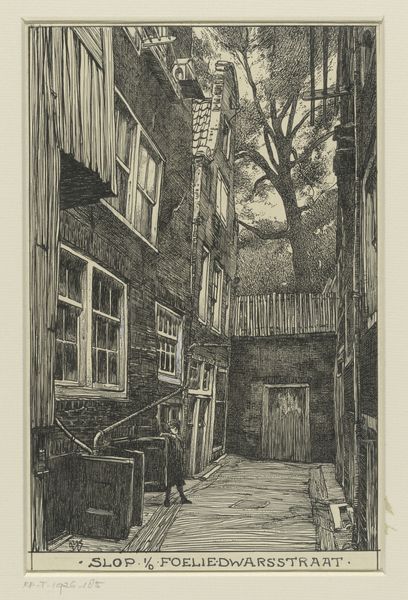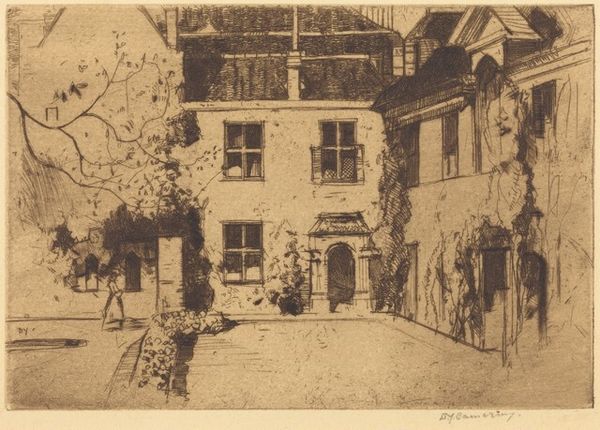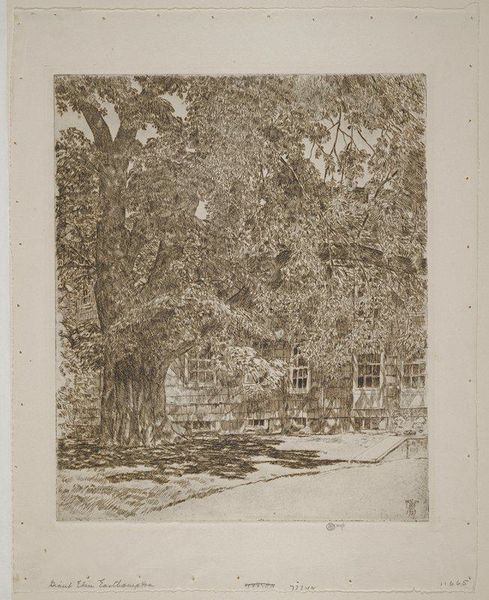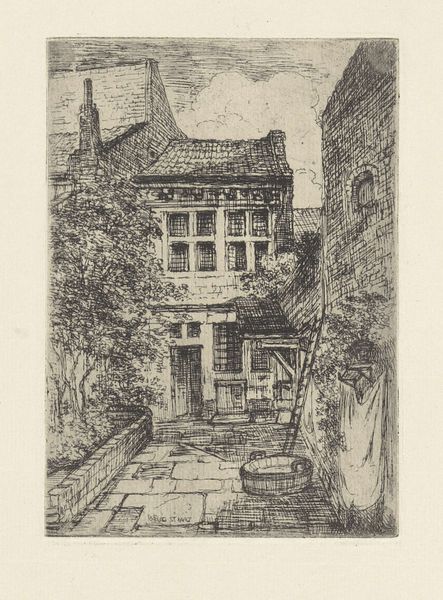
Dimensions: plate: 22.54 × 27.46 cm (8 7/8 × 10 13/16 in.)
Copyright: National Gallery of Art: CC0 1.0
Curator: Look at this remarkable etching! This is Childe Hassam’s "Home Sweet Home Cottage, No. 3, Easthampton," created in 1928. Editor: My first thought? Intriguing use of light and shadow, isn’t it? The entire structure seems almost devoured by vegetation. A house reclaiming itself for nature. Curator: Indeed. Hassam was a prolific artist, deeply invested in documenting American life, but particularly interested in the architecture and landscapes around Long Island. This piece represents a later period in his career where you see influences of both realism and Impressionism. Think about how those two styles engage with the shifting identity of rurality in the face of industrial growth. Editor: The overgrown state of the house… the way it’s swallowed by ivy…it suggests potent symbolism. Decay? Neglect? Or perhaps nature's quiet, unstoppable triumph? Curator: It can speak to different themes. What makes Hassam significant is the context he puts it into. While pastoral imagery harkened back to pre-industrialized life, his presentation always brings attention to its fragility, to an idealized world constantly encroached upon by modern progress. There's a bit of an ambivalence here. Editor: Yes! The doorway. So shadowed. Almost forbidding. I wouldn’t call it traditionally welcoming—not your conventional “home sweet home.” I am really intrigued by that very evocative doorway in light of its title. What stories is he trying to reveal with such strong juxtaposition? Curator: That’s what makes it compelling! It avoids sentimentality. Instead, the visual details underscore societal change. The title almost becomes ironic. In 1928, with booming development, what was truly “home” and “sweet”? Who benefited? It pushes us to confront nostalgia critically. Editor: Precisely. And beyond any potential critique of modernity, Hassam shows the beauty in how natural elements re-assert themselves onto our artificial constructs, our "homes." I hadn’t considered that commentary before now! Curator: And considering he made this through etching—think about that intricate, careful layering. Hassam wasn’t merely copying; he actively framed how society understood shifting values, as evident even in something seemingly straightforward like a cottage view. Editor: What appeared initially as simple beauty opens itself into profound considerations about progress. I'm left thinking of memory and how places shape us, and the symbols we assign. Curator: It leaves you to think deeply beyond the image.
Comments
No comments
Be the first to comment and join the conversation on the ultimate creative platform.
